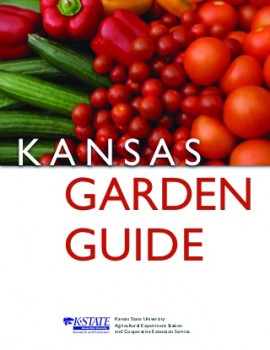By Sheridan Wimmer on February 9, 2016
Spring into Gardening
Use your extra outside space to grow, learn, teach and give

For many people, gardening means more than having fruits and vegetables at the family table. Digging up fresh dirt, planting a seed that becomes a tomato or cucumber, and the feeling of accomplishment that comes with growing your own produce can all be relaxing and rewarding. Gardening can even be a way to give back to your community. This spring, consider these tips to help you create a garden that’s perfect for you.
GARDENING WITH A GOAL
As you plan your garden, the first thing to determine is your goal.
“If you have an end goal in mind, that will help you determine a lot of the factors for setting up a garden,” says K-State 4-H associate extension specialist Evelyn Neier.
Neier suggests you ask yourself some questions to get started:
- Do you want to grow vegetables, fruits, herbs and/or flowers?
- What does your family like to eat?
- How much time are you prepare to devote to your garden?
- Do you plan to freeze or can?
- Do you want to provide solely for your own family, or are you considering donating to a local food pantry as well?
Depending on the time you’re willing to devote to a garden, you may want to consider starting small.
“You can always expand your garden once you get your feet wet,” Neier says. “Start small, develop your gardening confidence and then grow your garden’s size.”
Once you’ve developed your goals, you can optimize your garden space by planning which crops can be harvested early.
“Once those early-season crops are harvested, you can utilize that space for late-season crops,” Neier says. “Drawing a sketch of the garden you want will help you visualize the space and determine the area you have available.”
INVOLVE THE KIDDOS
Some families enjoy teaching their children where food comes from. For those families, involving little hands of the household can be a rewarding experience. Kids will learn several invaluable lessons in the planting, growing and harvesting of gardens.
“Our son has always been involved in gardening,” Neier says. “When he was in high school, he sold his harvest at the local farmers market to raise funds for his college tuition. He learned so many lessons in communication and customer service skills.”
To sell products at Kansas farmers markets, you must adhere to governmental regulations and guidelines. Visit www.agriculture.ks.gov for more information.
PLANT THIS
Radishes are one of the quickestgrowing vegetables. Ready to harvest in three to six weeks after planting, they make a good cool-season spring crop. In Kansas, radishes can be planted between March 15 and April 15 but need consistent moisture for best results.
Carrots are another hardy root crop that can be grown in Kansas in the spring. They grow best when sown as seeds but should be thinned once their tops start sprouting to avoid overcrowding underground. Gradually thin the crop as the plants mature until there are three to four inches between the plants.
Onions are best grown in the spring in Kansas. Their growth is characterized by day length. Some will stop forming bulbs once daylight reaches 14 to 16 hours, while others stop developing when there are only 10 to 12 hours of daylight. Onions like well-drained soil that contains plenty of nitrogen.
Other spring crops include:
- Cabbage
- Broccoli
- Endive
- Cauliflower
- Lettuce
- Potatoes
- Peas
- Spinach
- Turnips
- Beets
GROW YOUR KNOWLEDGE
Gardening requires knowledge of your area’s weather, soil type, growing specifications, water and sunlight requirements, timeliness of harvest, and insect and disease issues.
Kansas State University provides expertise through its extension program.
“Every county in Kansas has an extension service and agent who can help with gardening questions,” Neier says. “They are a great resource to utilize.”
Visit Lawn and Garden (k-state.edu) for tips on gardening, including how-to videos, pest information and recommended plants.
Neier also recommends the Kansas Garden Guide, available for download at www.bookstore.ksre.ksu.edu/pubs/s51.pdf.



